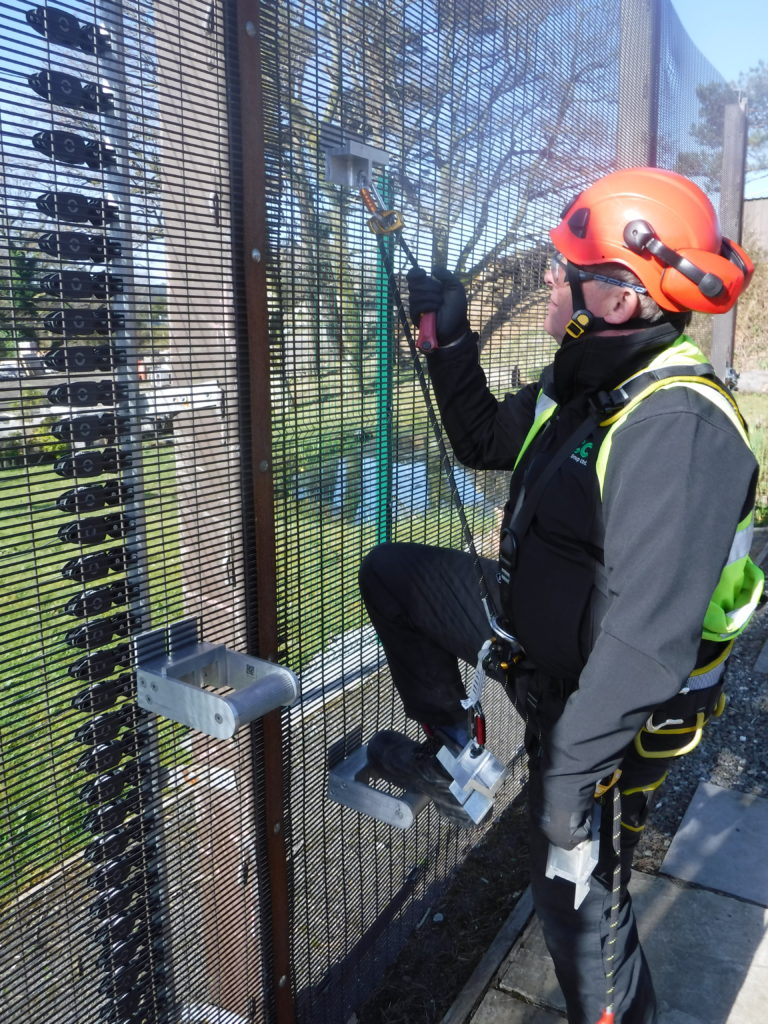The evolution of security fencing and attached fence top defence technology has progressed at a pace in recent years, with innovations in PID systems, anti drone technology, palisade fencing and almost impossible to defeat twin and even triple skin welded mesh perimeter protection.
The innovations themselves have given rise to health and safety issues, with the safety of installers being compromised with difficulty attaching heavy mesh to lifting appliances, as well as issues with working safely at height for bolting and installing 5 metre+ fences. The other fence top defences may also emit RF hazards (Radio Frequency Radiation). When a fence is designed and installed, the client is ultimately responsible for the safety of personnel involved in their project and must perform due diligence on the contractor’s installation methodology. Unfortunately, once a contractor is identified and hired to install a security fence and attached systems, the client sometimes (incorrectly) believes their liability is passed to the principal contractor.

A rated system for lifting 358 mesh has been needed for many years, with consideration of regulations sometimes falling by the wayside. The QAB system of lifting, manoeuvring and attaching fall prevention to mesh, brings installation methods up to date with the health and safety regulations. With LOLER (Lifting Operations Lifting Equipment Regulations) being a big consideration for lifting plans along with the Work at Height Regulation of 2005 to ensure employers are preventing falls. Ultimately complying with the Health and Safety at Work Act 1974.
Regulations themselves do not ensure safety but the use of expert advice in writing and instigation of risk assessments and method statements along with good supervision and management systems, will ultimately provide a safe place to work.
Further reading can be found on the LOLER, WAH and CDM regulations at https://www.hse.gov.uk/legislation/index.htm



Recent Comments